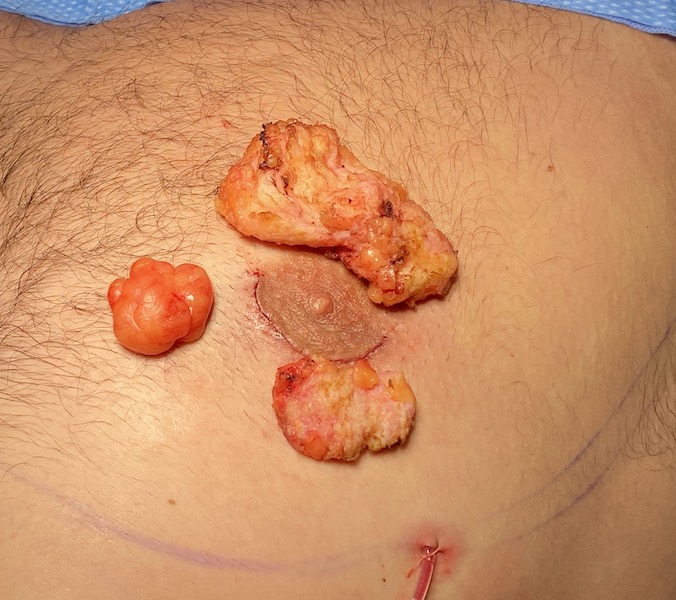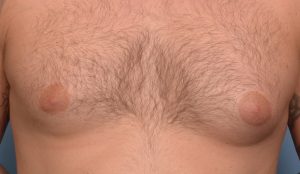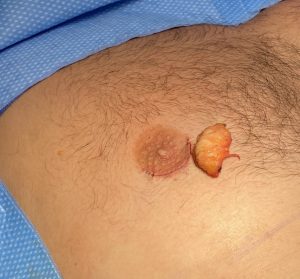Gynecomastia is the development of an abnormal amount of breast tissue in a male that creates undesired chest fullness. It doesn’t create a breast appearance in most men but the chest appearance is still aesthetically unfavorable. True gynecomastia is the very firm mass that occurs directly under the nipple-areolar complex. It is very dense breast tissue that feels like a discrete lump of varying sizes. Beyond the true gynecomastia excessive fibrofatty tissue can variably develop around the masses contributing to the broader effect of a fuller chest appearance.
The most common treatment for gynecomastia is liposuction. Different types pf liposuction have been applied to remove the gynecomastia tissues due to their more firmer consistency from ultrasonic to power-assisted technologies. While they can be effective they may not remove all gynecomastia tissues or achieve maximal gynecomastia reduction. The softer breast tissues come out easy but the more dense breast tissue, located centrally under the nipple, is more resistant and harder to fragment for removal.
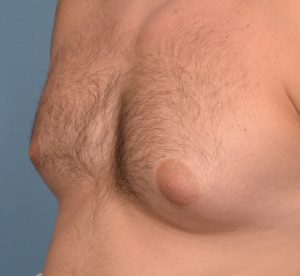
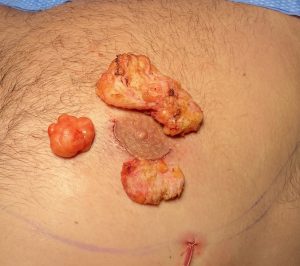
A combined liposuction-areolar incision combination is needed for some gynecomastia patients when a firm mass can clearly be felt. But if an areolar incisional approach is to be avoided, the results of the initial liposuction effort will prove if that was an effective approach.
Dr. Barry Eppley
Indianapolis, Indiana

